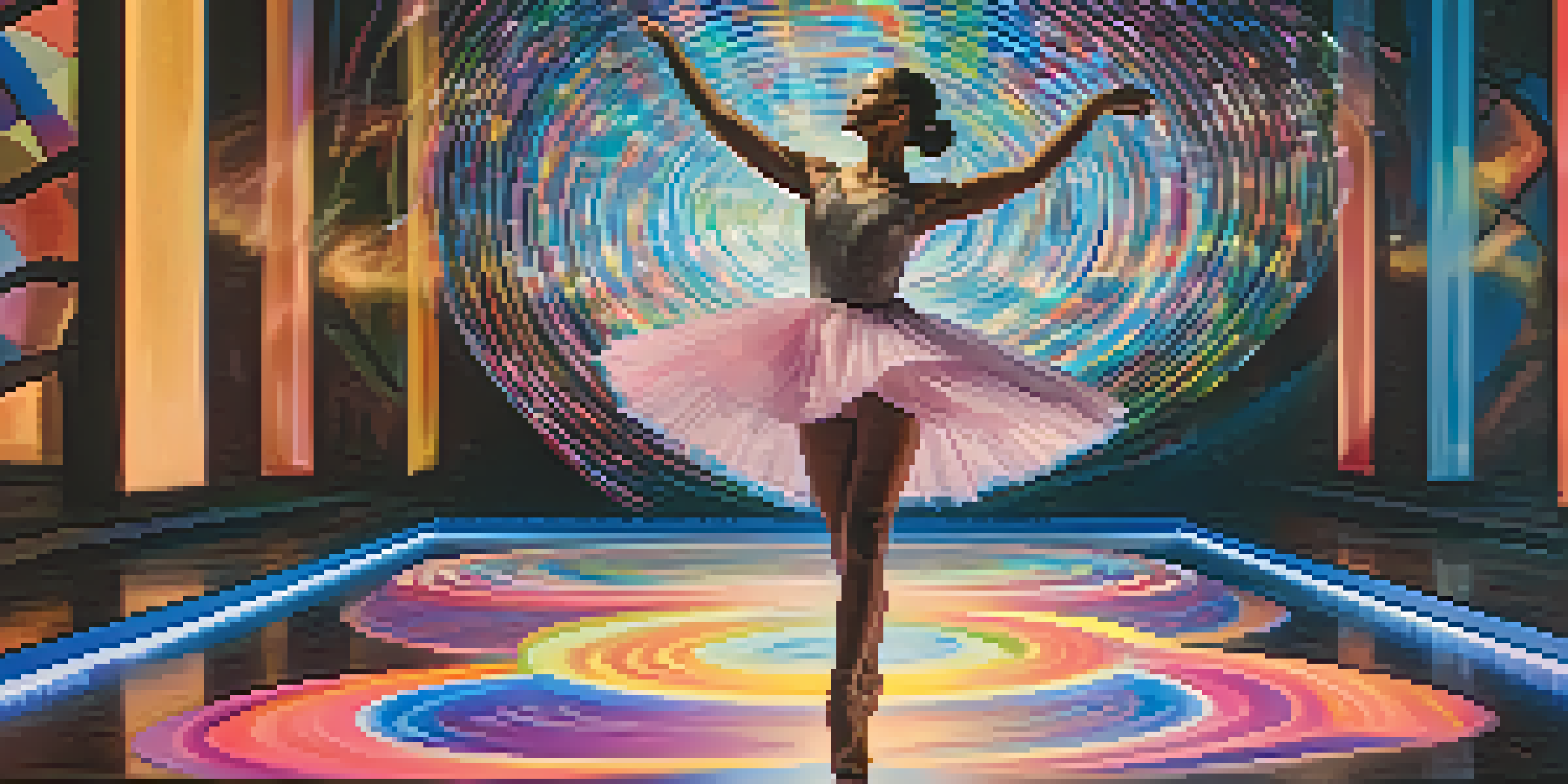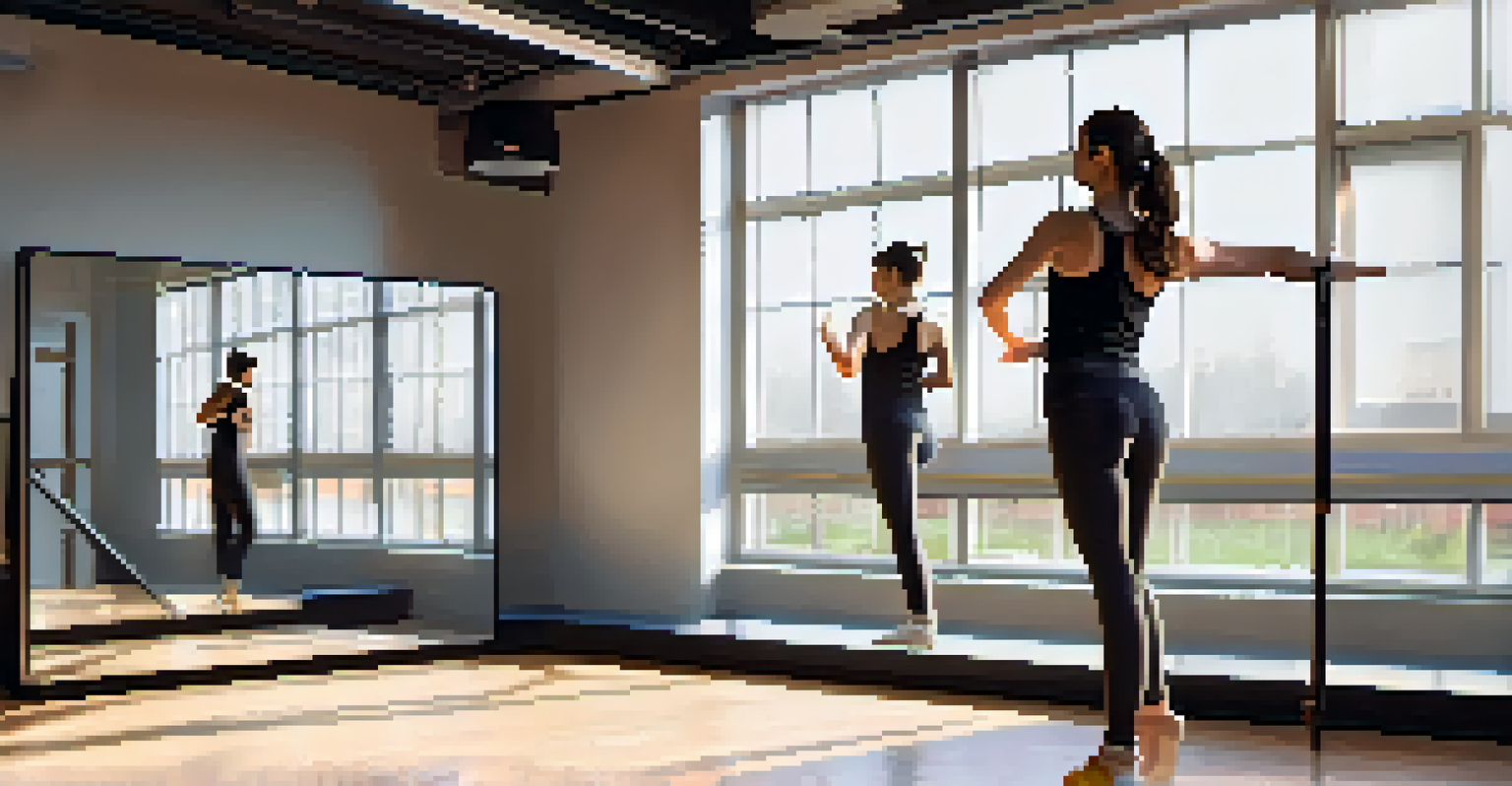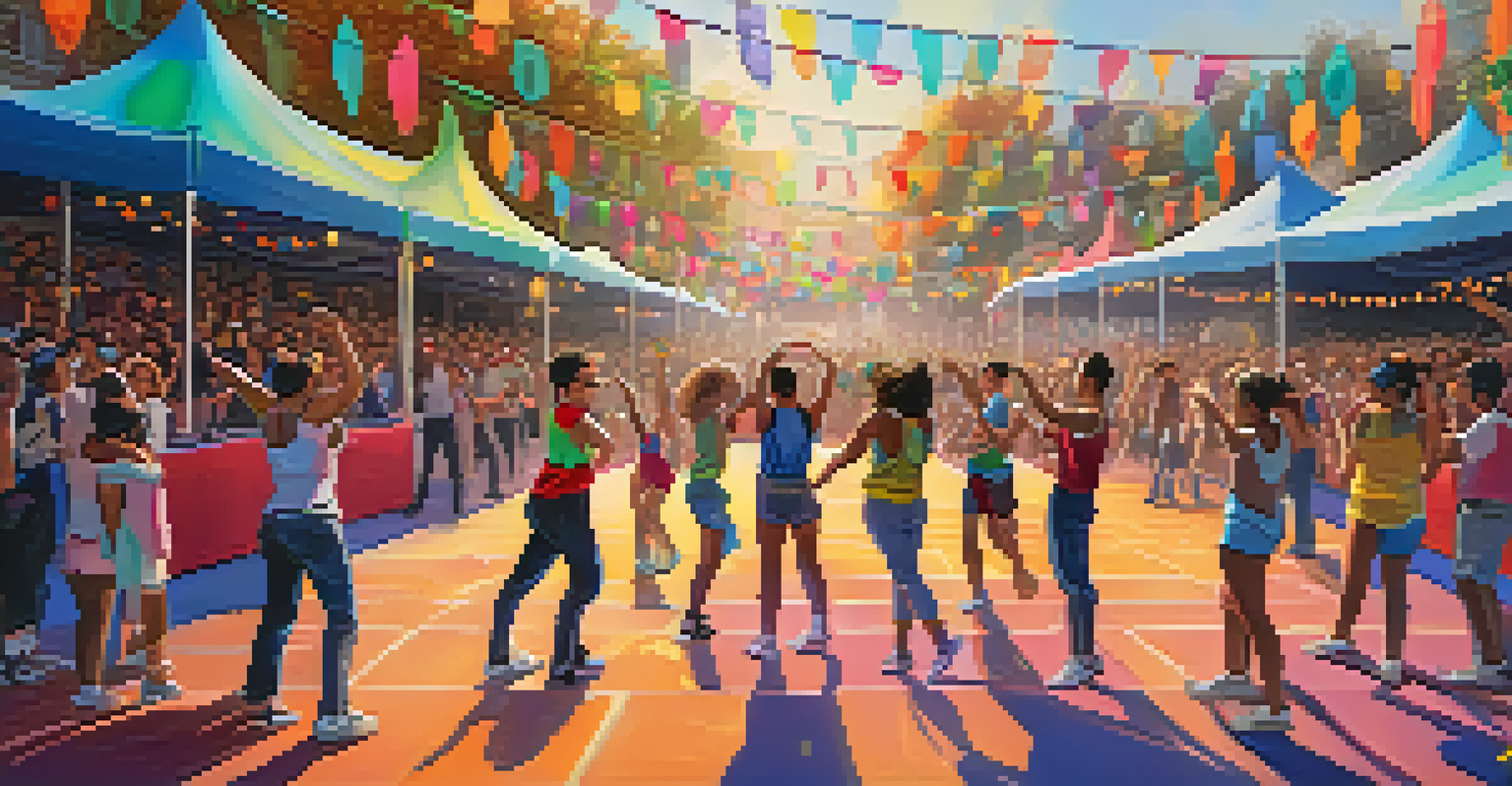Augmented Reality: Enhancing Dance Experiences Through Tech

What is Augmented Reality and How Does It Work?
Augmented Reality (AR) is a technology that overlays digital information onto the real world. Imagine looking through your phone or wearing AR glasses and seeing animated elements blend seamlessly with your surroundings. This technology uses sensors, cameras, and software to enhance our perception of reality, creating an interactive experience that captivates users.
Technology is best when it brings people together.
In the context of dance, AR can bring performances to life in ways that were previously unimaginable. Dancers can interact with virtual objects or characters, adding layers of storytelling and creativity. For instance, a dancer could perform against a backdrop of vibrant visuals that respond to their movements, making each performance unique.
The magic of AR lies in its ability to engage audiences more deeply. Instead of just watching a dance, spectators can feel part of the performance as they see digital elements reacting in real-time. This integration not only enhances entertainment value but also opens new avenues for creativity in choreography.
The Impact of AR on Dance Education
In dance education, AR is revolutionizing how students learn and practice. Traditional methods often rely on mirrors and physical instructors, but AR can provide real-time feedback and guidance. Imagine a student practicing a dance move while an AR overlay shows them the correct posture or timing, all without the need for a physical instructor.

This technology also allows students to experiment with choreography in a more interactive way. They can visualize how their movements will look on stage with AR tools that simulate lighting, scenery, and even audience response. This kind of immersive learning helps dancers develop their skills more effectively, promoting a deeper understanding of their art.
AR Transforms Dance Education
Augmented Reality enhances dance learning by providing real-time feedback and interactive tools for students.
Additionally, AR can bridge the gap between students and professional dancers. Through virtual masterclasses, learners can experience lessons from renowned choreographers who might otherwise be inaccessible. This opens up opportunities for students to refine their craft and gain insights that can be life-changing.
Enhancing Live Performances with AR Elements
Live performances are being transformed by the integration of AR, creating a more engaging experience for audiences. Imagine attending a dance show where dancers appear alongside 3D holograms, enhancing the narrative of the performance. This not only captivates viewers but also elevates the artistic expression of the dance itself.
The future belongs to those who believe in the beauty of their dreams.
AR can also be used to create interactive experiences where audiences become part of the show. For instance, through their smartphones, spectators might influence the visuals displayed during a performance. This level of interaction blurs the lines between performer and audience, making each event a unique experience.
Moreover, AR allows for innovative stage designs that can change in real-time, adding depth and dimension to traditional dance performances. This dynamic environment encourages dancers to explore new movements and expressions, ultimately pushing the boundaries of what dance can be.
AR in Dance Competitions and Festivals
Dance competitions and festivals have also embraced AR, adding a new layer of excitement to these events. Participants can use AR technology to enhance their routines, giving them a competitive edge. For example, they might incorporate virtual elements that interact with their movements, creating a visually stunning performance that stands out to judges and audiences alike.
Additionally, AR can enhance audience engagement at these events. Spectators could use their devices to view exclusive content, such as behind-the-scenes footage or detailed choreography analyses, enriching their experience. This not only makes the event more immersive but also helps build a community around the dance culture.
Enhancing Live Performances
AR integration in live dance shows captivates audiences with interactive visuals and dynamic stage designs.
Furthermore, AR can aid in scoring and feedback during competitions. Judges can access real-time data and visual analytics on performances, providing a more comprehensive evaluation process. This technological integration ensures that the focus remains on the artistry and skill of the dancers.
Creating an Inclusive Dance Environment with AR
One of the most significant benefits of AR in dance is its ability to create an inclusive environment. Dancers with disabilities can use AR tools to explore movement in ways that suit their unique needs. For instance, tailored AR programs can provide visual cues and adaptive choreography that cater to various physical abilities.
Moreover, AR can facilitate remote participation, allowing dancers from different locations to collaborate on projects. This opens up opportunities for individuals who may not have access to traditional dance studios or classes. By bridging geographical gaps, AR fosters a sense of community among dancers worldwide.
In essence, AR democratizes dance, making it accessible to everyone, regardless of ability or location. This commitment to inclusivity not only enriches the dance community but also encourages diverse voices and perspectives that enhance the art form.
Future Trends: The Next Frontier of AR in Dance
As technology continues to evolve, the future of AR in dance looks promising. With advancements in artificial intelligence and machine learning, we can expect even more personalized and responsive experiences. Imagine a world where AR can analyze a dancer's movements and suggest real-time adjustments or improvements, acting as a virtual coach.
Additionally, the rise of virtual reality (VR) could create even more immersive dance experiences. Combining AR with VR could allow audiences to step into a performance, experiencing the dance from various perspectives. This could revolutionize how we appreciate and engage with dance as an art form.
Inclusive Opportunities with AR
AR creates an inclusive dance environment by allowing dancers with disabilities to explore movement and facilitating remote collaboration.
Ultimately, as AR technology becomes more affordable and accessible, we will likely see it integrated into everyday dance practice. Whether in studios, performances, or competitions, the potential for creativity and innovation is limitless, promising a bright future for dance and technology.
Challenges and Considerations for AR in Dance
While the benefits of AR in dance are exciting, there are also challenges to consider. One significant concern is the accessibility of the technology. Not every dancer or studio may have the resources to invest in AR tools, potentially widening the gap between those who can and cannot access these innovations.
Furthermore, there’s the question of how technology might alter the essence of dance itself. Some purists may argue that relying on AR can detract from the raw emotional connection that live performances offer. Striking a balance between technology and traditional artistry will be essential as we navigate this evolving landscape.

Finally, as with any technology, there are concerns about data privacy and security. Ensuring that dancers and audiences can engage with AR safely and responsibly is crucial. Addressing these challenges will help create a sustainable future for AR in the dance world, one that respects both innovation and tradition.